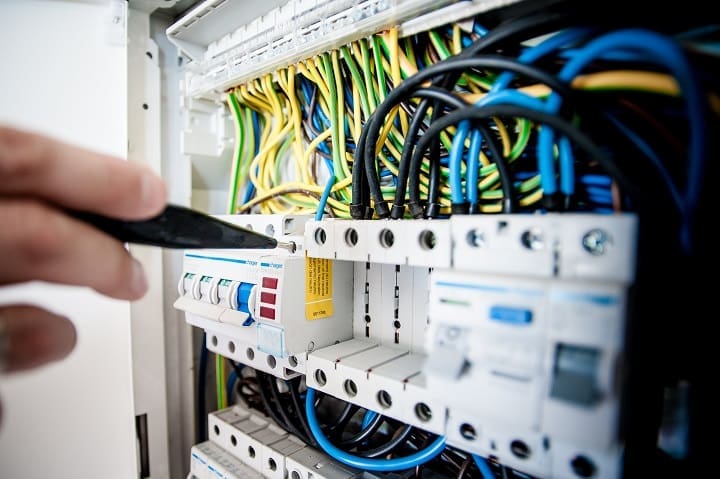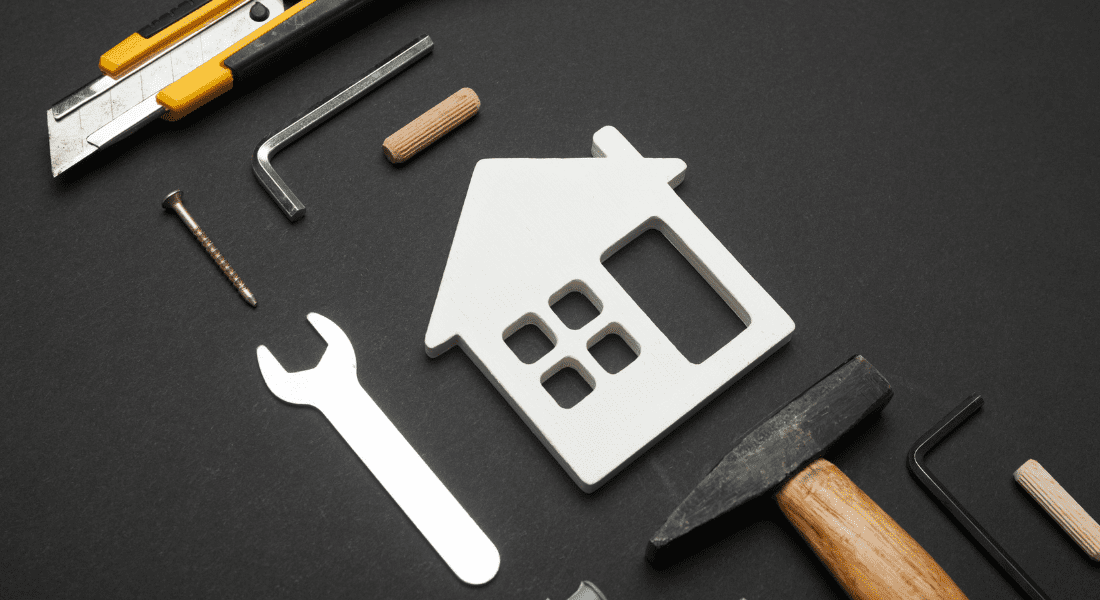Owning a property comes with its fair share of responsibilities, and one of the most crucial aspects is proper maintenance. Regular upkeep not only ensures your property’s aesthetic appeal but also extends its lifespan and value. Whether you’re a new homeowner or an experienced one, these property maintenance tips will help you keep your home in excellent condition for years to come.
Table of Contents
ToggleIntroduction
Creating a Maintenance Schedule
Consistency is Key:
Exterior Maintenance
Landscaping and Lawn Care:
- Regularly mow the lawn to keep it at an appropriate height, promoting healthy growth and a neat appearance.
- Trim shrubs and bushes to maintain their shape and prevent them from encroaching on walkways or obstructing windows.
- Incorporate native plants into your landscape design, as they are well-adapted to the local climate and soil conditions, requiring less water and maintenance compared to exotic species.
- Consider installing mulch around trees and flower beds to suppress weed growth, retain moisture, and improve soil health.
- Implement a fertilization schedule to provide essential nutrients to your lawn and plants, promoting vigorous growth and vibrant foliage.
Roof and Gutter Maintenance
The roof is one of the most critical components of your home, protecting it from rain, snow, and harsh sunlight. Proper maintenance is essential to prolong its lifespan and prevent costly damage. Here’s how you can effectively maintain your roof and gutters:
- Regularly inspect your roof for signs of wear and tear, such as missing or damaged shingles, cracked flashing, or sagging areas.
- Address any issues promptly to prevent water infiltration and structural damage. Consider hiring a professional roofer for thorough inspections and repairs, especially for steep or complex roof designs.
- Clean gutters and downspouts at least twice a year to remove debris, leaves, and other obstructions that can impede proper drainage.
- Inspect gutters for signs of damage, such as rust, corrosion, or loose fasteners, and repair or replace damaged sections as needed.
- Ensure downspouts are directing water away from the foundation to prevent water pooling around the perimeter of your home, which can lead to basement leaks and foundation damage.
- Consider installing gutter guards to minimize debris buildup and reduce the frequency of gutter cleaning.
Exterior Paint and Siding
The exterior paint and siding not only enhance the aesthetic appeal of your home but also provide protection against the elements. Here are some tips for maintaining your exterior paint and siding:
- Regularly inspect the exterior of your home for signs of peeling, cracking, or blistering in the paint, as well as damage to the siding, such as rot or warping.
- Address any issues promptly by repainting or repairing damaged areas to prevent further deterioration and water infiltration.
- Consider applying a fresh coat of paint every few years to refresh the appearance of your home and provide additional protection against moisture and UV damage.
- Investigate alternative siding materials, such as vinyl or fiber cement, which offer durability and low maintenance requirements compared to traditional wood siding.
Interior Maintenance
HVAC Systems
- Schedule annual maintenance appointments with qualified HVAC technicians to inspect and tune up your heating and cooling systems. These routine check-ups can help identify any potential issues early on, preventing costly repairs down the line.
- Regularly clean or replace air filters in your HVAC system to maintain peak performance and indoor air quality. Clogged or dirty filters can restrict airflow, causing your system to work harder and consume more energy.
- Consider investing in high-efficiency air filters or upgrading to a smart thermostat to further enhance energy savings and comfort in your home.
Plumbing and Water Systems
- Check for leaks under sinks, around toilets, and in the basement on a regular basis. Even minor leaks can escalate quickly, causing water damage and mold growth if left unchecked.
- Insulate exposed pipes during colder months to prevent them from freezing and bursting. Pipe insulation is inexpensive and easy to install, offering added protection against winter weather conditions.
- Consider installing a water leak detection system or smart water shut-off valve for added peace of mind. These devices can detect leaks early and automatically shut off the water supply to prevent extensive damage.
- Electrical Systems
- Maintaining the safety and functionality of your property’s electrical systems is paramount. Here are some steps you can take to ensure your electrical systems are in top condition:
- Regularly inspect outlets, switches, and electrical panels for signs of wear or damage, such as frayed wires, burn marks, or loose connections. Address any issues promptly to prevent electrical hazards and potential fires.
- Replace damaged cords, plugs, or switches as soon as they are identified. Avoid using extension cords as permanent solutions and ensure all electrical appliances and devices are properly grounded.
- If you experience flickering lights or frequent circuit trips, it may indicate underlying electrical problems. Contact a licensed electrician to diagnose and repair any issues to ensure the safety and reliability of your electrical system.
Electrical Maintenance
Refrigerator and Freezer:
- Improving efficiency is as simple as cleaning the coils at the back of your refrigerator. Over time, dust and debris can accumulate on the coils, causing your appliance to work harder and consume more energy. Regularly vacuum or brush the coils to remove buildup and optimize performance.
- Check the door seals on your refrigerator and freezer for signs of wear or damage. A faulty door seal can compromise the appliance’s ability to maintain proper temperature levels, leading to increased energy consumption and potential food spoilage. Replace worn or damaged seals to ensure a tight seal and efficient operation.
- Consider investing in a refrigerator thermometer to monitor temperature levels inside your appliance. This allows you to adjust settings as needed to keep perishable foods fresh and safe for consumption.

Washer and Dryer
- After every use, clean the lint filter in your dryer to prevent lint buildup and reduce the risk of fire. A clogged lint filter restricts airflow, causing your dryer to work harder and increasing the likelihood of overheating. Regular cleaning helps maintain optimal airflow and efficiency.
- Inspect washing machine hoses for signs of wear, leaks, or bulges. Over time, rubber hoses can deteriorate and develop cracks, leading to water damage and potential flooding. Replace damaged hoses with stainless steel braided hoses for added durability and peace of mind.
- Consider scheduling regular maintenance checks with a qualified technician to ensure your washer and dryer are functioning properly. Professional inspections can help identify and address any potential issues before they escalate into costly repairs.
Oven and Stove
- Prevent smoke and odors by regularly cleaning the oven, including the interior, racks, and door. Built-up grease and food residue can accumulate over time, resulting in unpleasant odors and smoke during cooking. Use a mild detergent and non-abrasive scrubber to remove stubborn stains and debris.
- Check burner igniters on your stove regularly to ensure they are functioning correctly. Faulty igniters can cause uneven heating, delayed ignition, or failure to ignite, leading to cooking problems and frustration. Replace malfunctioning igniters promptly to maintain reliable performance.
- Consider investing in a carbon monoxide detector for added safety in your kitchen. Carbon monoxide is a colorless, odorless gas that can be emitted by gas-powered appliances, including ovens and stoves. A detector alerts you to dangerous levels of carbon monoxide, allowing you to take immediate action to protect yourself and your family.
Safety Checks
Smoke Detectors and Carbon Monoxide Alarms:
Fire Extinguishers:
Security Systems:
Seasonal Maintenance
Spring Cleaning and Maintenance:
Summer Energy Efficiency:
Fall Preparation:
Winter Readiness:
Conclusion
Frequently Asked Questions (FAQs)
How often should I clean my gutters?
Regular gutter cleaning is recommended at least twice a year – once in the spring and once in the fall.
Can I perform HVAC maintenance myself?
While you can change filters, it’s best to have a professional perform annual HVAC maintenance to ensure optimal performance.
Are security systems worth the investment?
Yes, security systems provide peace of mind and can potentially lower your home insurance premiums.
What’s the benefit of planting native plants in my landscape?
Native plants require less water and maintenance, making them an eco-friendly and sustainable choice for your yard.
How can I prevent frozen pipes during winter?
Insulate exposed pipes and allow faucets to drip cold water to prevent freezing.




